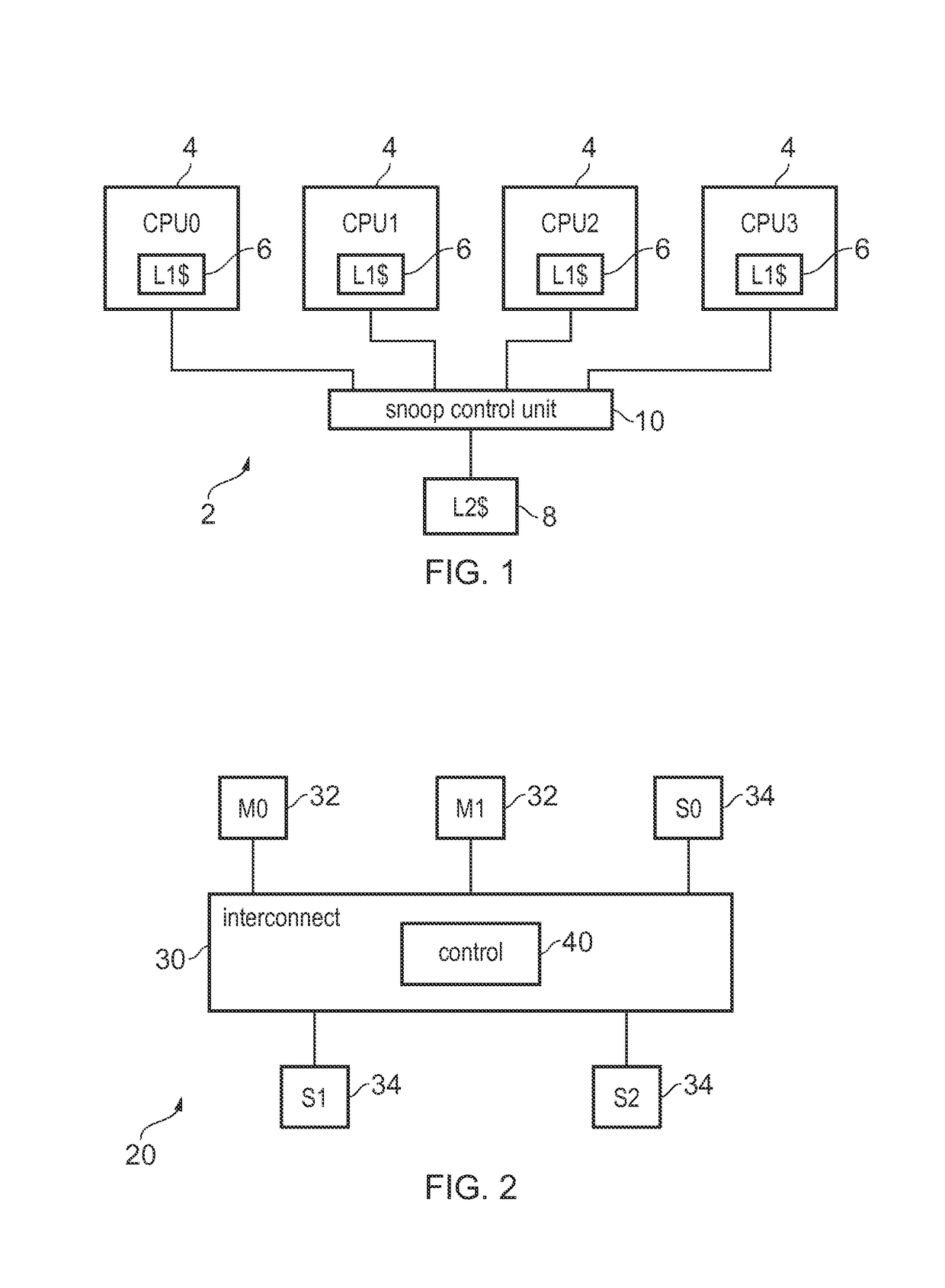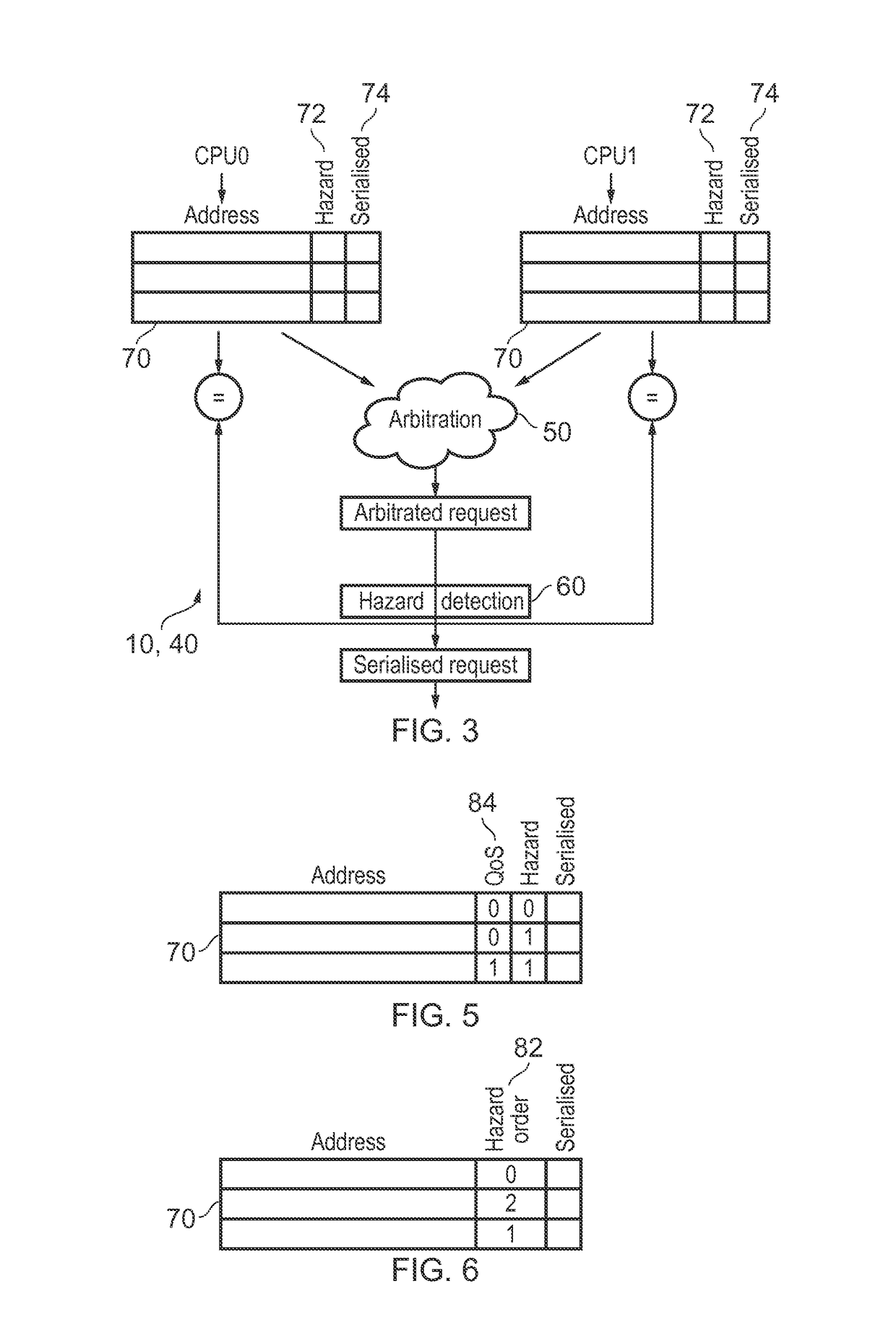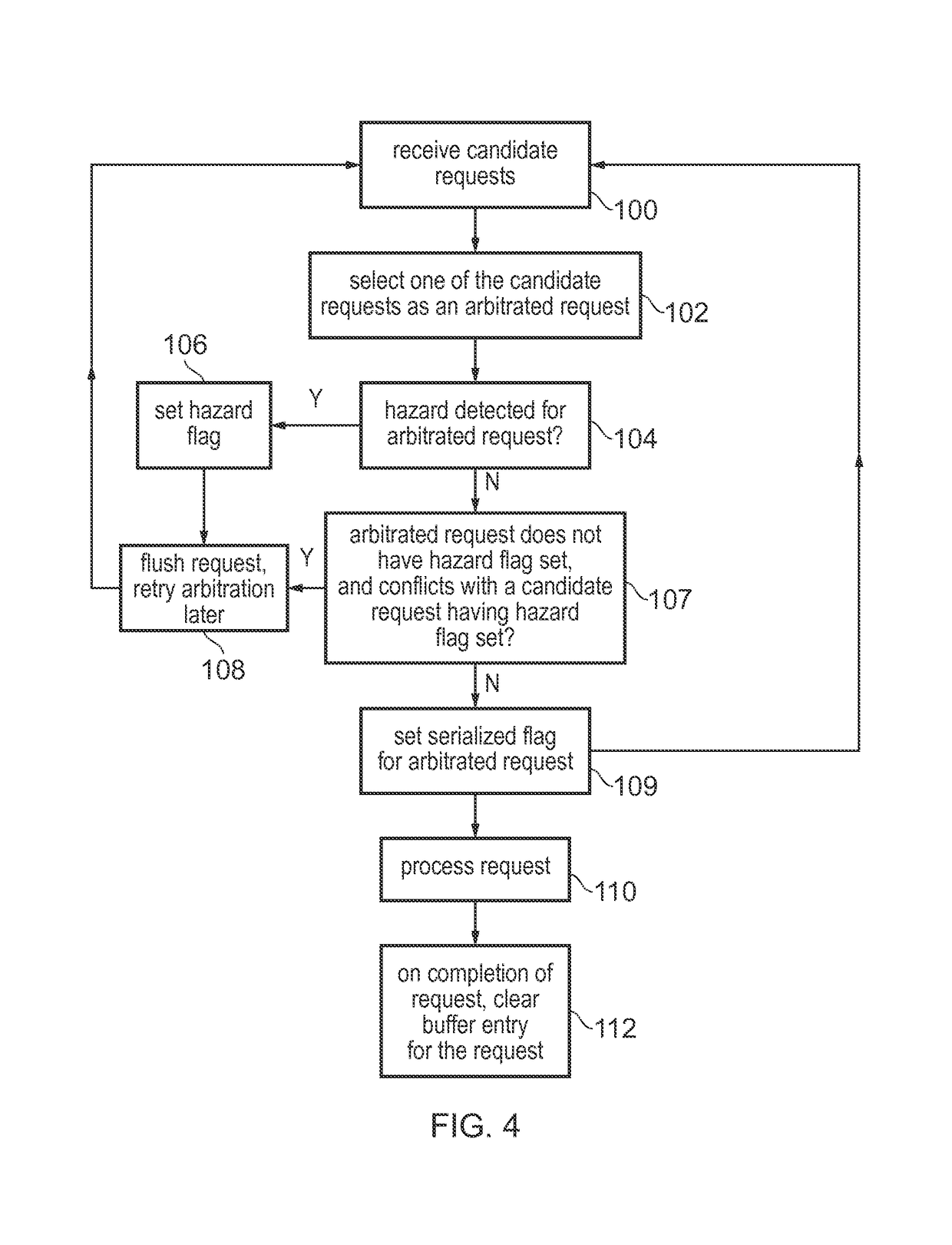Arbitration and hazard detection for a data processing apparatus
a data processing apparatus and hazard detection technology, applied in the field of data processing, can solve problems such as inability to detect hazard, inability to accurately detect hazard, and failure to respond to returned requests
- Summary
- Abstract
- Description
- Claims
- Application Information
AI Technical Summary
Benefits of technology
Problems solved by technology
Method used
Image
Examples
Embodiment Construction
[0059]FIG. 1 schematically illustrates an example of a data processing apparatus 2 including several processors 4 each having a level 1 (L1) cache 6. The processors 4 share a level 2 (L2) cache 8. A snoop control unit 10 is coupled to the processors 4 and the L2 cache 8 and maintains coherency between the processors 4. For example, when one processor 4 issues a read or write transaction to a given address, the snoop control unit 10 may issue snoop transactions to check whether the L1 cache 6 of other processors 4 also holds a cached version of the data from the same address. If there are multiple versions of data from the same address, the snoop control unit 10 can identify which value is the latest one and ensure that it is written back to the L2 cache so that it is available to other processors 4. Sometimes, more requests targeting the L2 cache may be received than can be handled in the same cycle. For example, the L2 cache may only be able to handle one request at a time, but som...
PUM
 Login to View More
Login to View More Abstract
Description
Claims
Application Information
 Login to View More
Login to View More - R&D
- Intellectual Property
- Life Sciences
- Materials
- Tech Scout
- Unparalleled Data Quality
- Higher Quality Content
- 60% Fewer Hallucinations
Browse by: Latest US Patents, China's latest patents, Technical Efficacy Thesaurus, Application Domain, Technology Topic, Popular Technical Reports.
© 2025 PatSnap. All rights reserved.Legal|Privacy policy|Modern Slavery Act Transparency Statement|Sitemap|About US| Contact US: help@patsnap.com



